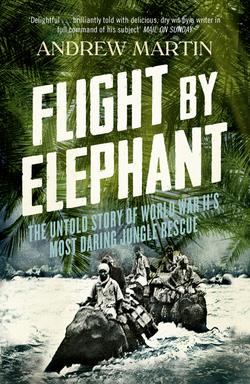Читать книгу Flight By Elephant: The Untold Story of World War II’s Most Daring Jungle Rescue - Andrew Martin - Страница 16
The ‘Chaukan Club’ Sets Off
ОглавлениеOn 9 May a Kachin runner or messenger arrived at Rossiter’s bungalow. He had been sent along the track from Sumprabum by Rossiter’s colleague, Leyden. He handed Rossiter a chit (or note), written by Leyden. It said Myitkyina had been entered by the Japanese. All the officials had been cleared away ‘by another route’. Leyden himself had been ordered to leave, and he had been destroying important papers prior to doing so. The Chaukan Pass had been recommended to Leyden. He admitted that he had heard bad things about the Chaukan, but he had reason to believe a rescue party would be sent into it from the Assam side, a theory apparently based on radio messages, or rumours of radio messages. In fact, at about the time Leyden was writing this chit, RAF planes sent from Assam were dropping messages in the vicinity of Sumprabum specifically forbidding entry into the Chaukan Pass, it being considered impassable. But these messages were never picked up, just as letters and radio messages giving the same warning were never received.
Rossiter, too, had heard bad things about the Chaukan Pass, but it seemed that Leyden’s message convinced him, or half convinced him. He mustered his own party, with supplies of food but no elephants. The party consisted of Rossiter, his Shan wife and child, Millar, Goal Miri and twenty Indian ‘subordinates and servants’, plus an unspecified number of porters. On 11 May, as mentioned, they teamed up with Sir John and the railway party at the spot called Hkam Ho, fifty miles short of the Chaukan Pass. On 13 May, they were joined by Leyden, who brought some porters of his own, and a man called Ronald Jardine, who was forty-five but, being white-bearded and already haggard, looked older. He was an employee in Rangoon of Lever Brothers, the soap manufacturers, and, although not currently very fragrant, he had married into Coty, the French perfume dynasty. (Jardine’s wife, too, had already been evacuated.)
On 14 May, by which point they had progressed about fifteen miles towards the pass from Hkam Ho, trudging along a rocky mule track winding through fine soil – dust, really – and dried scrub, Sir John’s two elephant men refused to go any further ‘as the road is so bad and there is no fodder for animals’. Sir John paid them off, and they and their elephants turned back to Hkam Ho.
On 17 May, the monsoon proper started, and Sir John was getting into his rhetorical stride: ‘The day’s march was a most loathsome one, carried out under the most disgusting weather conditions along a jungle track which went up hill and down dale with slopes as steep as 1-in-1 in some places, the track itself being in many places a stream of liquid mud inches thick.’ It brought them to a village of bamboo houses, called by Sir John Hpaungmaka: ‘This camp is full of winged insects of every description, sandflies and blood blister flies, abounding in myriads, were a pest to everyone.’
The going had become next to impossible, and they weren’t even at the pass yet. It was therefore decided to dispatch three of the younger, fitter men as an advance guard, together with porters. So it was that Millar, Leyden and Goal Miri set off with their dozen porters, with the idea, as Sir John fate-provokingly put it, ‘… of doing double marches per day, get to Assam as quickly as possible and to send a relief force to us with rations and medical stores at whichever point we might have reached on the route’.
